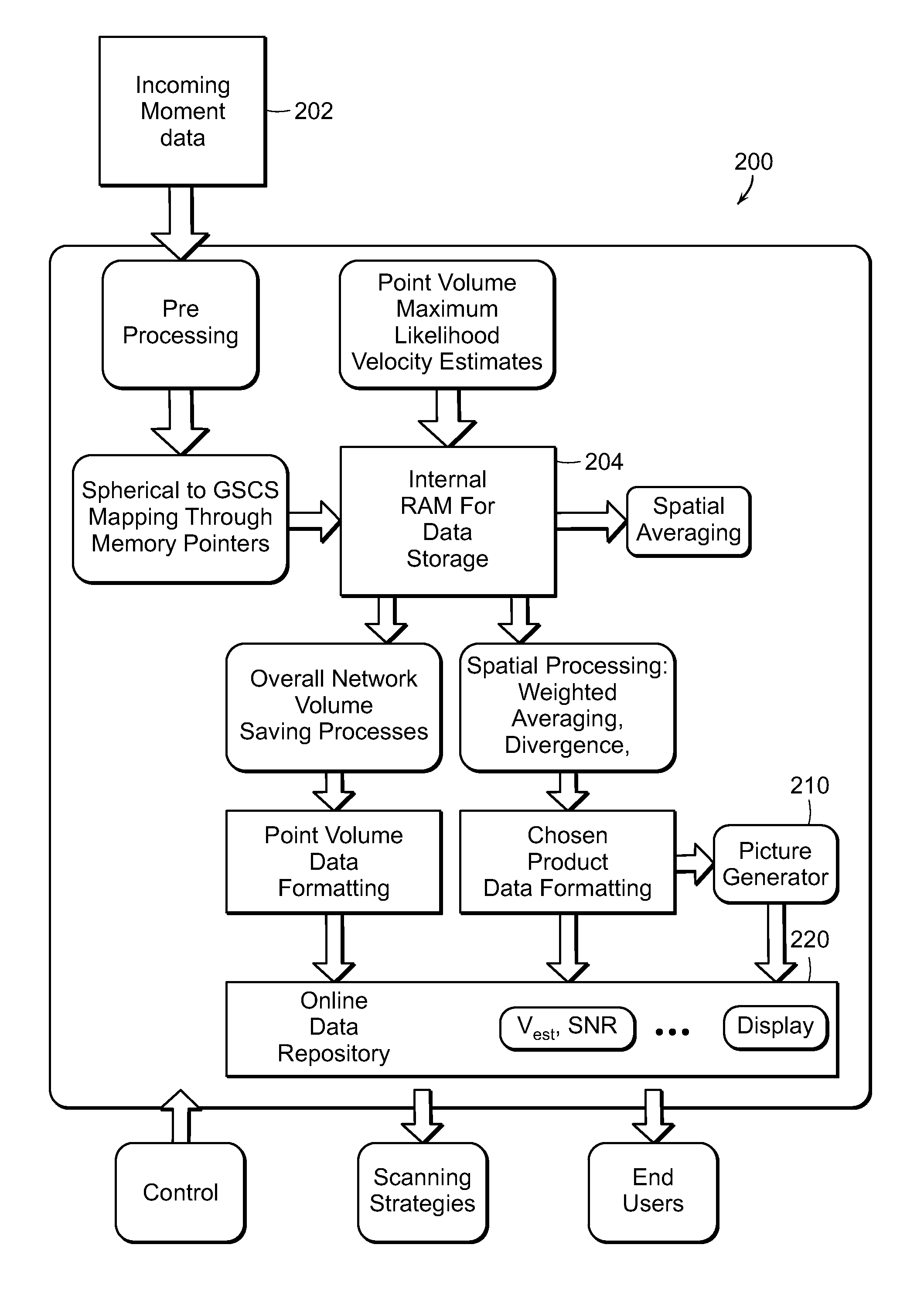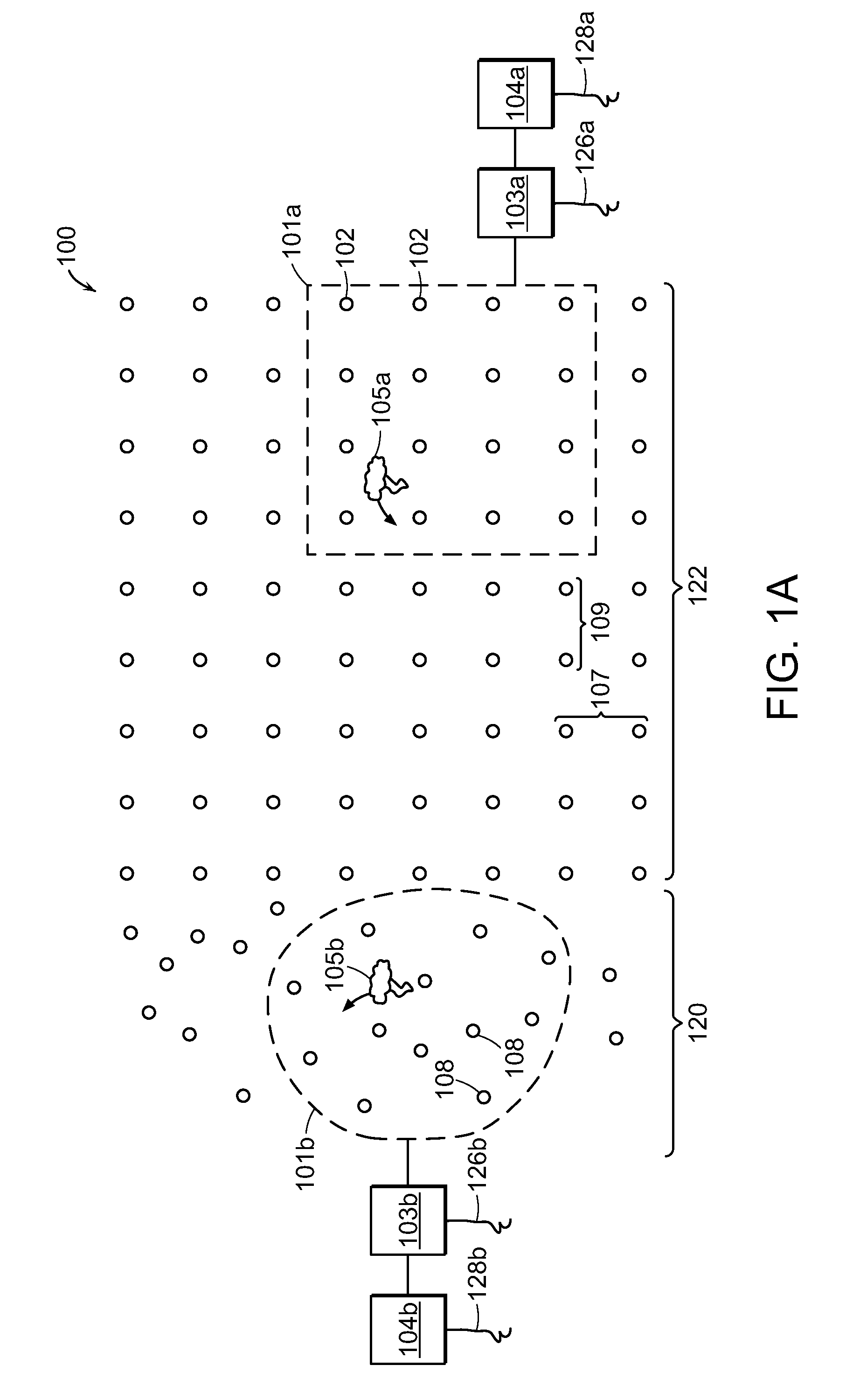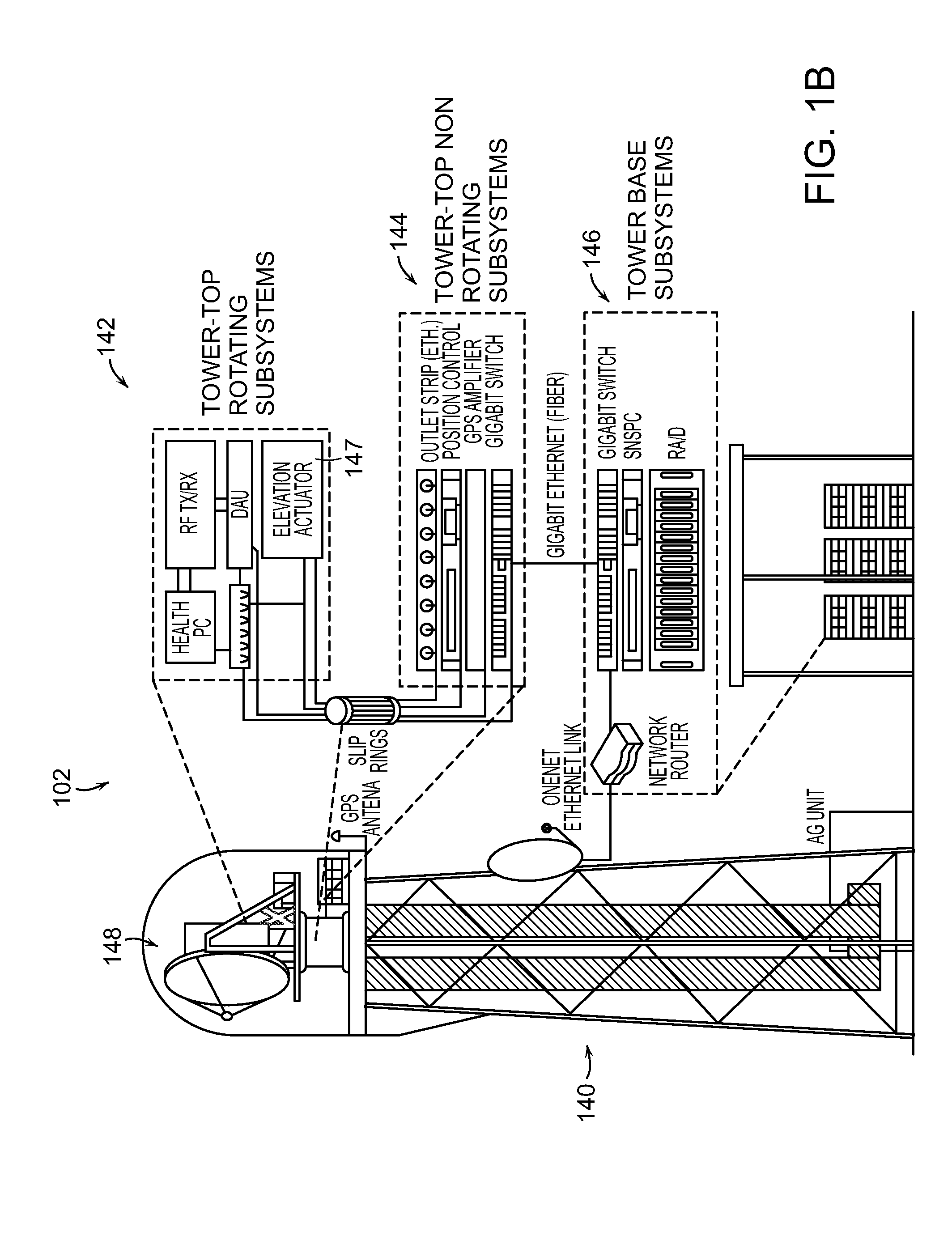System and method for generating derived products in a radar network
a radar network and derived product technology, applied in the direction of climate sustainability, instruments, measurement devices, etc., can solve the problem that the most accurate network based velocity measurement is not always the most accurate, geometrically efficient dual-doppler retrieval, etc., to improve numerical weather models' skill, improve system resource utilization, and low velocity field appreciation
- Summary
- Abstract
- Description
- Claims
- Application Information
AI Technical Summary
Benefits of technology
Problems solved by technology
Method used
Image
Examples
Embodiment Construction
[0044]FIGS. 1A-1D illustrate a system 100 according to a preferred embodiment of the invention. In a preferred embodiment, the methods and systems of the invention operate in conjunction with a radar network that includes a plurality of nodes 102 that can operate collaborating in distinct regions or groups.
[0045]FIG. 1A illustrates a radar system 100 comprising a plurality of radar stations or “nodes”102 covering a wide geographic area. In one embodiment, each of the radar nodes 102 operates at relatively short range, communicates with other nodes over a communications network, such as an Ethernet network and / or the internet, and adjusts its sensing strategy in response to evolving weather and changing user needs.
[0046]In this embodiment, the system 100 is divided into one or more smaller networks regions 101a, 101b, each comprised of a subset of nodes 102 operating in coordination with one another under the control of a command and control processor 103a, 103b. The command and cont...
PUM
 Login to View More
Login to View More Abstract
Description
Claims
Application Information
 Login to View More
Login to View More - R&D
- Intellectual Property
- Life Sciences
- Materials
- Tech Scout
- Unparalleled Data Quality
- Higher Quality Content
- 60% Fewer Hallucinations
Browse by: Latest US Patents, China's latest patents, Technical Efficacy Thesaurus, Application Domain, Technology Topic, Popular Technical Reports.
© 2025 PatSnap. All rights reserved.Legal|Privacy policy|Modern Slavery Act Transparency Statement|Sitemap|About US| Contact US: help@patsnap.com



